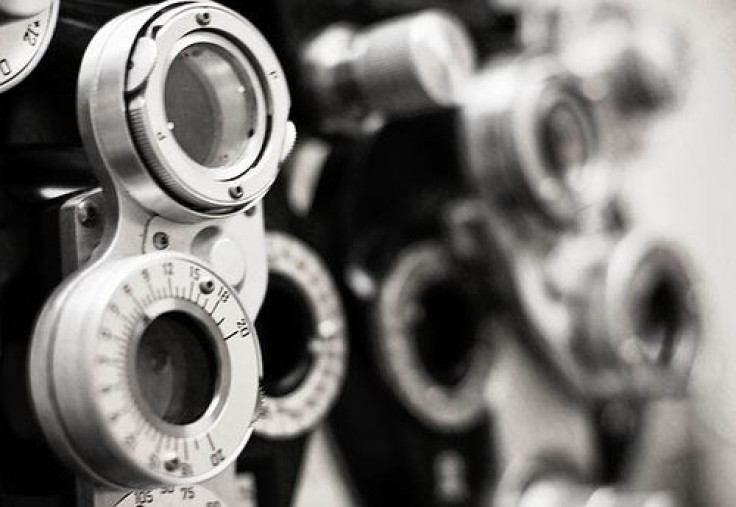Could An Eye Exam Help Diagnose Alzheimer’s? Retinal Thinning Linked To Disease In Mice

By the time many people receive the news that they have Alzheimer’s disease, their brain cell count will have already been cut in half. Technology hasn’t advanced enough to sufficiently screen for the disease before it begins attacking the brain. But according to research presented at the U.S. Society for Neuroscience meeting, retinal scans during eye exams may someday provide that option.
Located in the back of the eye, the retina is made of the same original tissue that formed the brain. So it makes sense that identifying damage in a person’s retina may allow doctors to screen for mental illness at the same time, says Scott Turner, director of the memory disorders program at Georgetown University Medical Center. Turner and his colleagues found that retinal thinning in mice occurred only in those who also had Alzheimer’s disease, a promising finding that has long been missed in studies of the eye.
"This suggests a new path forward in understanding the disease process in humans, and could lead to new ways to diagnose or predict Alzheimer's that could be as simple as looking into the eyes," Turner told the BBC.
Given the retina is a direct extension of the brain, Turner speculated any neuronal loss in brain cells would be reflected in retinal cells as well. This could one day lead to opticians performing Alzheimer’s screening tests, provided they have the right tools.
The present study involved genetically engineered lab mice with Alzheimer’s disease. Researchers observed parts of the eye known as the inner nuclear layer and the retinal ganglion cell layer. The retinal ganglion cells are responsible for transmitting both image-forming and non-image-forming information, received by the inner nuclear layer, to various parts of the brain. In the mice with Alzheimer’s, the ganglion cell layer decreased in size by half, and the inner nuclear layer by a third.
"We're hoping that this translates to human patients and we suspect that retinal thinning, just like cortical thinning, happens long before anyone gets dementia," Turner said, adding that current methods for testing Alzheimer’s biomarkers are often costly and invasive. Scanning for retinal thickness would come with none of the same costs. “As measured by optical coherence tomography,” he said, the procedure “would be both inexpensive and non-invasive."
Treating Alzheimer’s early on is critical to preventing the crippling onset of mental illness. The most common form of dementia, Alzheimer’s arises after a build-up of plaque in the brain, produced by beta amyloid proteins. Although scientists have a basic understanding of how these plaques disrupt neural communication in the brain, they have a cruder understanding of how the plaques fist arise. As many as five million Americans have Alzheimer’s disease, according to the Centers for Disease Control and Prevention. There is currently no cure.
The next step after the present study is to move from mice to humans, researchers said. They will need to find out whether any neurological gaps exist between the subjects that would alter the pattern Turner and his colleagues observed.
"This early-stage study, which is yet to be published in full, was carried out in mice, and further research will be necessary to determine whether changes in the retina found here are also found in people with Alzheimer's,” Laura Phipps, of Alzheimer's Research U.K., told the BBC. "Diagnosing Alzheimer's with accuracy can be a difficult task, which is why it's vital to continue investing in research to improve diagnosis methods."



























